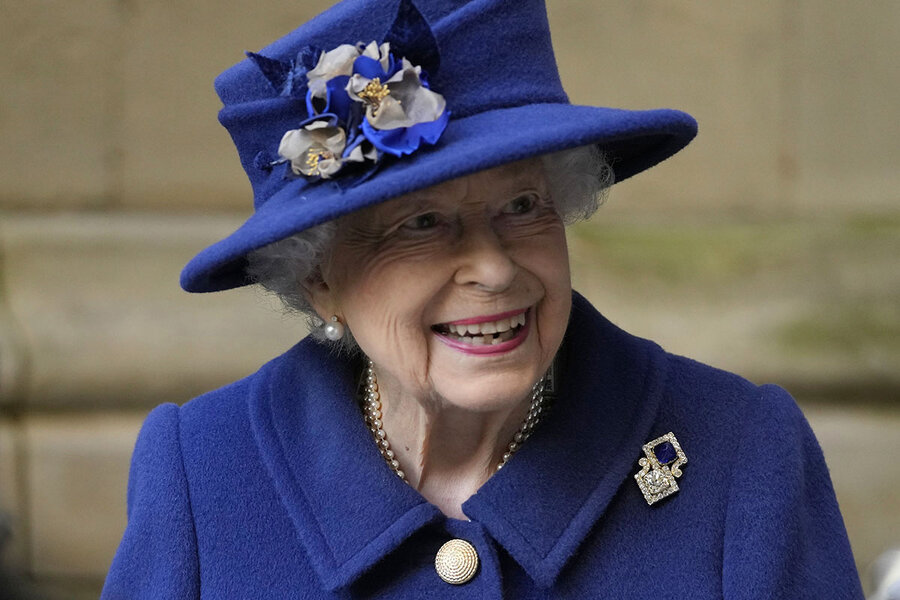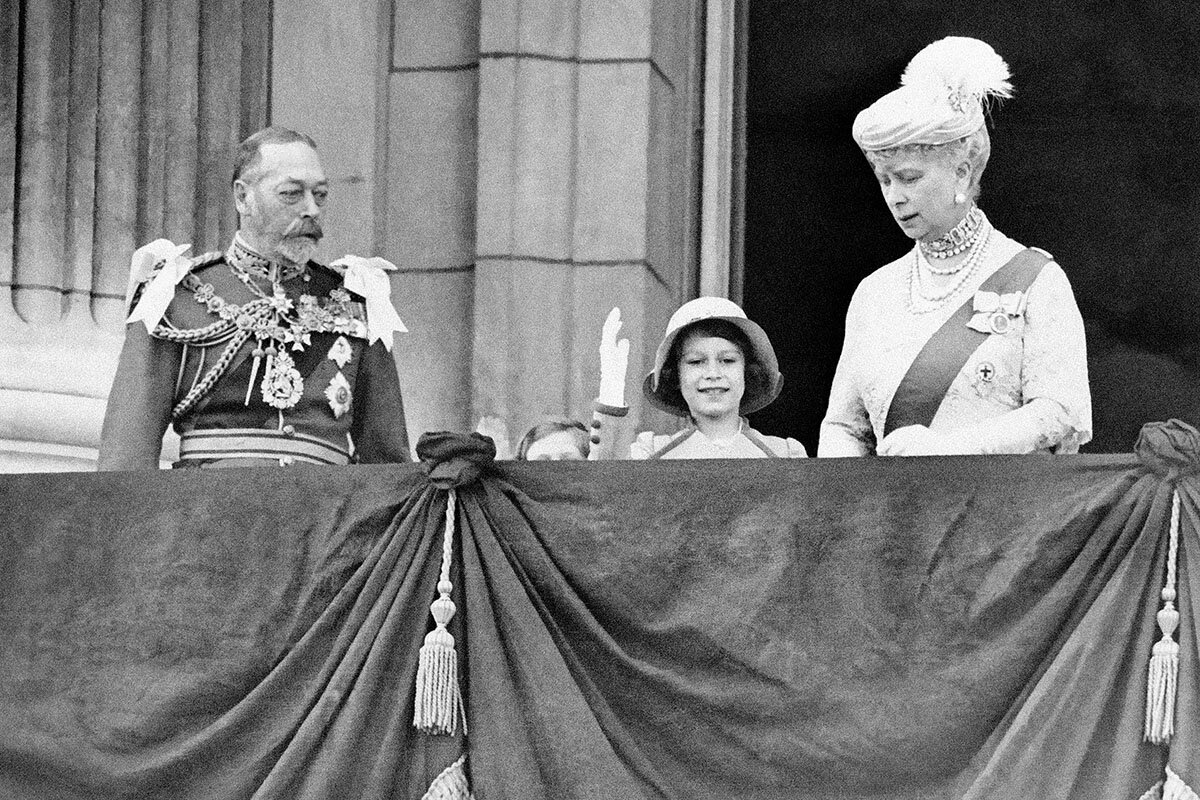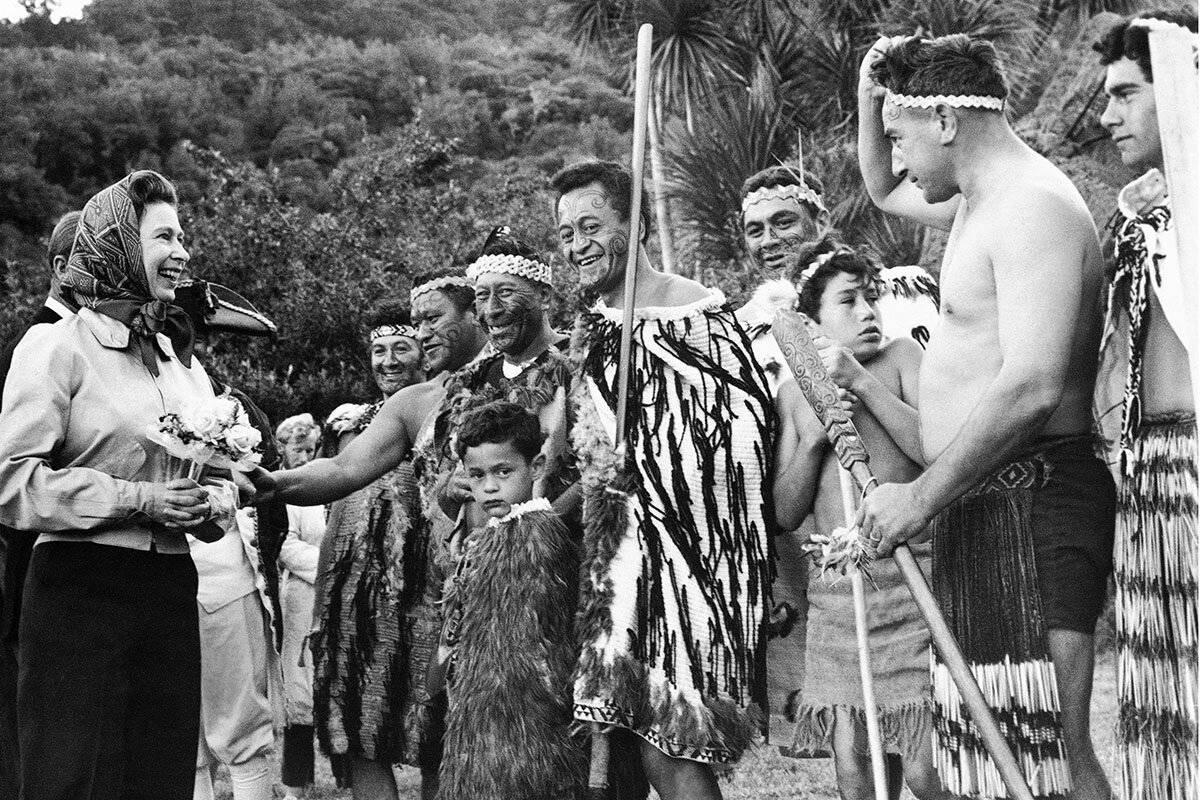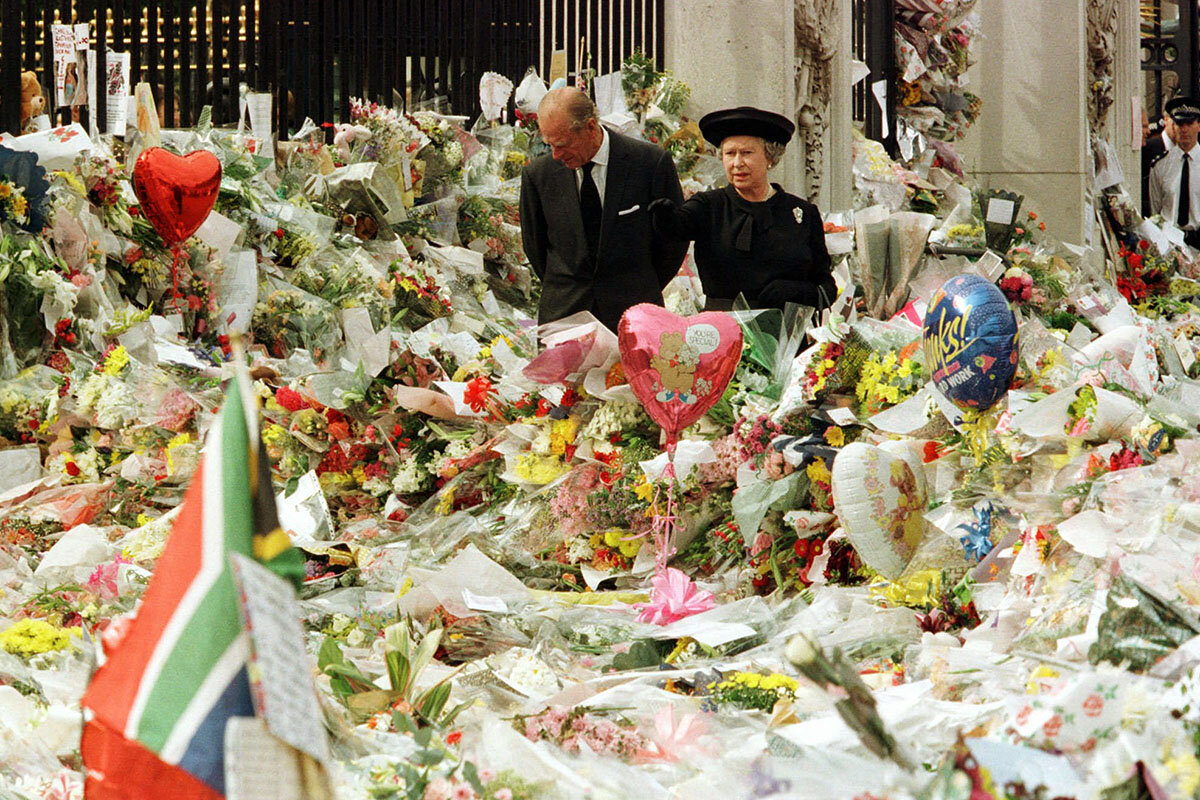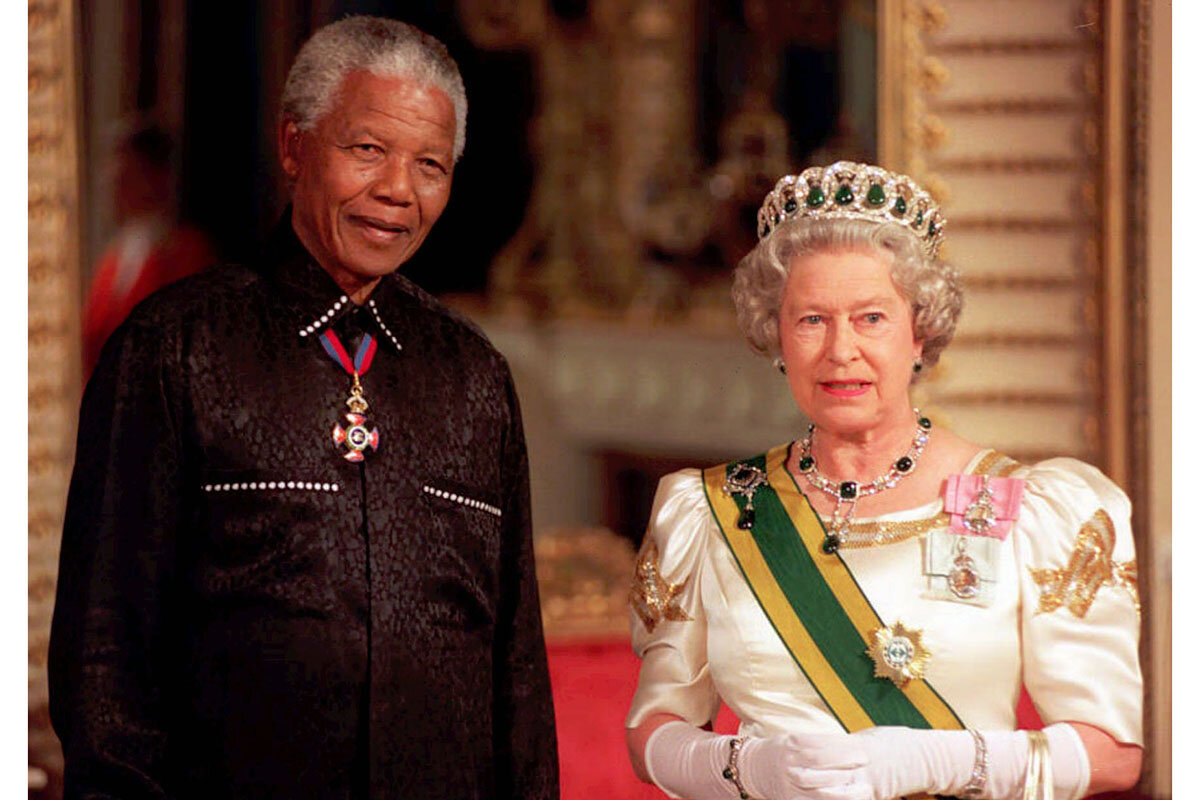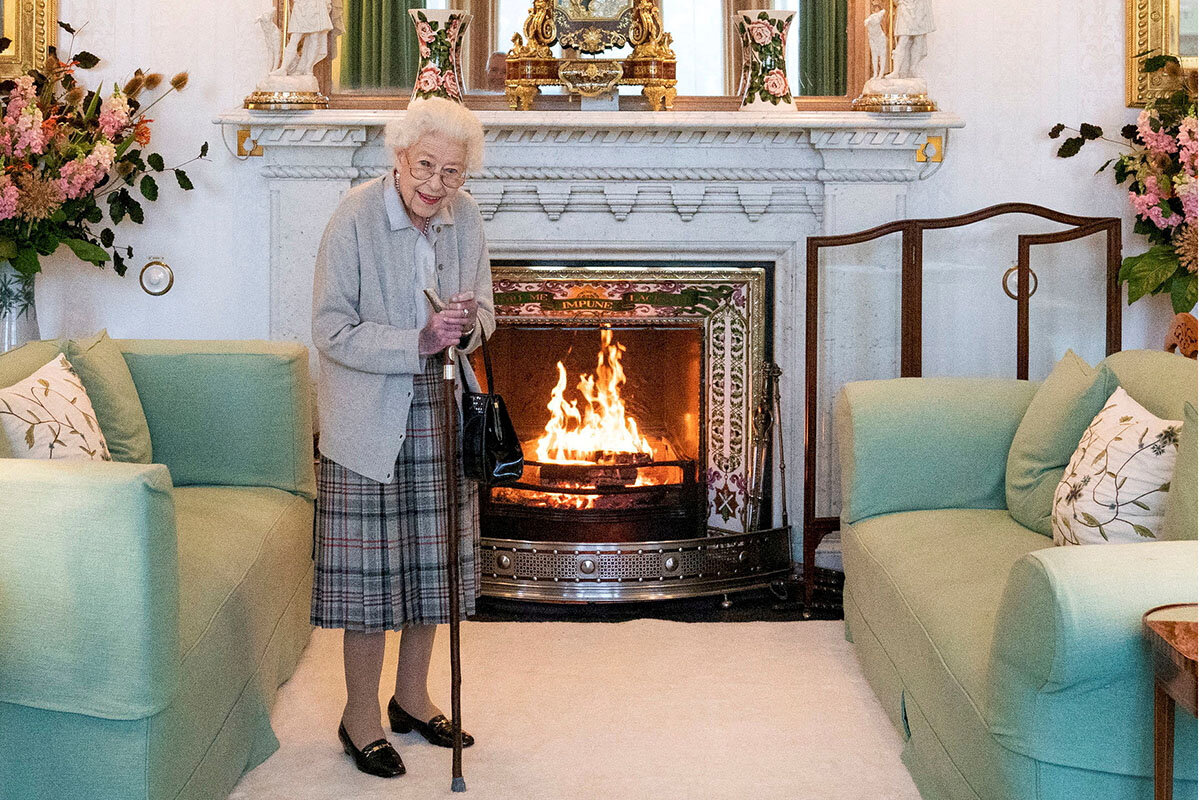Queen Elizabeth: The monarch at the heart of an evolving Britain
Loading...
| London
When Queen Elizabeth II ascended the British throne in 1952, her empire from the West Indies to the Far East was in its final stages of decline, having lost the crown’s leading dominion, India, five years prior.
Having reigned for 70 years, she was the longest-serving of any British monarch, beating Queen Victoria’s 63 years. Just this spring, she celebrated a Platinum Jubilee in 2022, marked by four days of festivities. If the two queens were widely popular figureheads, both seen as national grandmothers by the end of their reigns, they ruled over very different Britains. Queen Victoria oversaw a period of industrial and military change – and the rapid expansion of the British Empire to global domination.
Queen Elizabeth oversaw the empire’s diminishment and Britain’s struggle to define itself in the postwar era from a superpower to a bit nation in the British Isles. Her death, at the age of 96, comes at a time of great uncertainty with war having returned to Europe, a major economic crisis looming and threatening to plunge many into poverty, and turbulence in British politics in the wake of Brexit and the pandemic.
Why We Wrote This
Queen Elizabeth II oversaw Britain’s struggle to define itself in the postwar era. Yet through the tumult, the queen’s legacy has been to maintain a sense of purpose – for country and monarchy – when pessimism and insecurity could have led Britons to turn their backs.
Yet through all of the tumult that has led to so much self-reflection in British society about the country’s place in the world, Queen Elizabeth’s legacy has been to maintain a sense of forward-moving purpose – and faith that the monarchy itself serves a purpose – when pessimism and insecurity could have caused Britons to turn their backs.
She accepted the weight of decolonization – which hung so heavily over her father, King George VI, who lost India during his rule – and turned it into a positive force in the shape of the Commonwealth of Nations. In doing so, she embraced a changing Britain, both as it became a multiracial, multicultural society at home, and as it found a place on the global stage. The grouping of former dependencies was her beloved project from its earliest inception. Within five months of her coronation, she embarked on the most ambitious Royal Tour of the Commonwealth the world had yet seen. She kicked off her Diamond Jubilee 60 years later in the city of Leicester, Britain’s most diverse. That was no coincidence.
Ultimately, Queen Elizabeth managed to keep opinions of the monarchy steady, despite internal sagas and mishaps. In an age in which mainstream politics has fallen victim to the protest against the status quo, the ancient monarchy – the epitome of the establishment – is as popular as ever, so much so that it’s easy to forget that the monarchy is actually “a fragile institution,” says Philip Murphy, professor of British and Commonwealth History at the University of London.
Without Queen Elizabeth, he says, the monarchy’s march into the modern era could never have been so seamless. “What we have had since 1952 is a monarch perfectly attuned to the kind of needs and role of a modern constitutional monarch,” he says. “You can’t take the monarchy for granted. It’s got to be reinvented the whole time.”
Elizabeth was born in 1926 and never expected to take the throne. But all of that changed when her uncle King Edward VIII abdicated to marry the American divorcee Wallis Simpson, leaving her father as king.
Elizabeth’s natural inclination for order, which her nanny noted in the 1950s, was shaken by the constitutional and family crisis. The abdication, and her deep spirituality, fortified her sense of mission and dedication. At age 21 she solemnly made a speech to the Commonwealth: “I declare before you all that my whole life, whether it be long or short, shall be devoted to your service and the service of our great Imperial family to which we all belong.”
It was only four years later that she became queen, a role she assumed without question for nearly three-quarters of her life. While she was initially seen as boring and uninspired, over time these traits were redefined as constant and unflinching, her most enduring strengths. “Boring can be comforting,” says Karina Urbach, a biographer of Queen Victoria. “You can rely on her appearing on TV at Christmas, always calm and composed. Some people need that.”
As a young queen, her first prime minister was Winston Churchill. Since then she has held weekly audiences with 14 additional heads of government (as she did with Liz Truss, appointed by the queen at Balmoral, her private retreat in Scotland, just days before her death). Most Britons were not alive when she took the throne and thus can’t separate their views of the monarchy from the queen herself, says Roger Mortimore, director of political analysis at Ipsos MORI. The firm has been conducting polls since the 1990s, and they have remained consistently favorable of her. The last, in May 2022, conducted for her Platinum Jubilee showed 86% of respondents saying they are satisfied with the way the queen did her job, while 68% favor Britain remaining as a monarchy. This represents little change over the past two decades.
Queen Elizabeth II has not just ruled the transition from empire to small nation, but from backwater economy thwarted by statism and unionism to a world-leading entrepreneurial and financial center, and from a conservative and class-based society to one that has embraced liberal social policies.
For many of her subjects, she, as a symbol, “holds together everything we feel good about and that makes us feel good about ourselves,” says Professor Mortimore. “Part of why it works and part of her popularity is that we recognize a little bit of ourselves in her. At the same time we can see some things that aren’t there enough that we wish were there and that we admire in her, [like] the dedication and hard work that’s gone into being queen for so long.”
It is not that Queen Elizabeth did not have to navigate the bumpy turns and twists of the 20th and 21st centuries. The royal family has lived through sagas and scandals, many involving her own children and their marital woes. Her own marriage was not without contention – she married the late Prince Philip, with whom she fell in love when she was 13, and he was never a man who easily conformed. Still, none of his well-documented frank talk seemed to impact opinions of her.
Her biggest personal mishap was seen in her choices after the death of Princess Diana in 1997 in a car crash in Paris. Initially the queen stayed in Balmoral, her estate in Scotland, with her grandchildren Prince William and Prince Harry. Her family argued that this protected them from the media spotlight after their mother’s death. But she was portrayed as aloof and uncaring, a rare flash of public anger directed at the House of Windsor.
She quickly changed tack, coming to London to walk among the throngs of flowers that mourners placed in Diana’s memory. It marked the beginning of the royal family’s adaptation to the 24/7 media scrutiny, which has only become more intrusive in the age of social media.
Yet the changing media landscape has served to highlight the queen’s ability to stay above the political fray.
More scandals followed in the final years of her life. Diana’s son Prince Harry and his wife, Meghan Markle, walked away from their royal duties and relocated to the United States in 2020, before giving a controversially televised interview about it to Oprah Winfrey in 2021. Both Harry and Meghan made allegations against “the firm,” including comments made about the skin color of their first child Archie. While sections of Britain’s tabloids showed much hostility to the pair, the queen maintained her relationship with her grandson and reportedly showed a degree of sympathy to his young family.
That does not seem to have extended to her son, Prince Andrew, mired in allegations of involvement within the social circles of convicted sex offenders Jeffrey Epstein and Ghislaine Maxwell. While he has denied those allegations, Andrew was forced to step away from his royal titles, duties, and patronages, a decision most likely enforced by his mother.
The queen’s final years were also marked by loss. The death of Prince Philip during the COVID-19 pandemic showed the first signs of her vulnerability and fragility – alone by her husband’s casket as she said her goodbyes under “social distancing” rules. At that moment, she came to symbolize many of the agonies people faced during the pandemic up and down the country. Even during a moment of personal grief, the queen observed rules flouted by her then prime minister, Boris Johnson, bringing her closer to the hearts and minds of her people.
Despite the constant attention on the family, the public barely knew anything about her – aside from a public love of dogs and horse racing. “That has been her secret sauce,” says Sally Bedell Smith, who has written extensively about the royal family. The queen has managed to keep her own opinions and those of the people around her about the most mundane issues private.
Throughout much of her reign she was overshadowed by more excitable – and exciting – members of the royal family. It was her own mother who dazzled crowds and monopolized press coverage, as well as her sister, Princess Margaret, and later Princess Diana. It was only after the queen mother’s death in 2002, says Ms. Bedell Smith, that the queen’s relationship to the people seemed to shift.
“There was something that happened when she was coming back from Westminster Hall where her mother’s casket was on display, ... and as she drove through Parliament Square, there was this spontaneous burst of applause,” she says. “It was a moment when the respect and admiration for her shifted over into genuine love. … At that moment she became the beloved grandmother figure.”
From then on Queen Elizabeth softened: smiling more, loosening up, letting some of her reported quick wit, seen in private, more visibly show. With the widely adored marriage of Prince William and Kate Middleton, Duchess of Cambridge, Ms. Bedell Smith says the queen relaxed more, perhaps confident in the longevity of the monarchy in a post-Elizabethan world.
But not everyone is sure about the future of the monarchy without Queen Elizabeth at its head.
Dr. Murphy notes that the monarchy is always at its most popular when there is broad political consensus in the U.K. But the Britain left by Queen Elizabeth is perhaps as riven as it has been since the 1980s and the union-busting era of Margaret Thatcher. Hard divisions have formed between generations, first over Brexit and now with rising inequality and political strife.
While a change on the throne – especially when Prince William succeeds his less popular father, the now ascendant King Charles III – might bring a breath of fresh air to the royal family, for now it is still associated with older, stiff-upper-lipped Britain.
Outside Britain, the queen’s Commonwealth has been overshadowed by other intergovernmental organizations, such as the European Union, at the same time that anti-colonial sentiment has grown in former colonies. The Commonwealth might not find itself as cohesive without the unifying force and passion of the queen at the head.
Indeed, without its queen, Britain could learn just how fragile its monarchy really is.
Editor's note: The original version misstated how many prime ministers served during Queen Elizabeth's reign.




